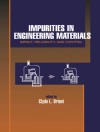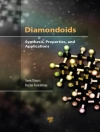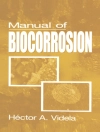Metals and Alloys continues the series of graduate textbooks on Industrial Chemistry by Mark A. Benvenuto. It shows the essential industrial applications, processes and chemistry background for the extraction of metals, as well as the production and applications of alloys. The book discusses how large scale and minor processes affect every-day life, challenges in prevention and removal of waste by-products and illustrates selected chemical processes for which efforts have been made to improve and “green” industrial production of metals and alloys.
Sources for metals are sorted by metal and alloy and backed by basic chemical background information and process set up. Overviews on worldwide ore distribution, refined metal and alloy production numbers are another focus of the book.
- Discusses sources, key processes and applications.
- Connects what students learn in class to real, large-scale metals chemistry that makes modern life possible.
- Intended for students, graduate students and beginners in the fiield of Chemistry, Chemical Process Engineering, Chemical Engineering and Materials Science.
- Visit degruyter.com for more information on books by Mark A. Benvenuto: Industrial Chemistry (2013), Industrial Chemistry: For Advanced Students (2015) and Industrial Inorganic Chemistry (2015).
About the Author:
Mark Anthony Benvenuto
A Fellow of the American Chemical Society, he received his Ph D in inorganic chemistry from the University of Virginia. After a post-doctoral fellowship at the Pennsylvania State University, he joined the University of Detroit Mercy, where he is now the Department Chairman and teaches an industrial chemistry course.
Inhaltsverzeichnis
1 Introduction and Overview
1.1 Historic, ancient
1.2 Large-scale use
1.3 18th-19th century discovery
1.4 Modern, niche uses
2 Copper
2.1 Bronze
2.2 Brass
3 Tin
3.1 Solder
3.2 Plating
3.3 Niobium-tin
4 Zinc
4.1 Nickel-silver
4.2 Solders
4.3 Galvanizing
4.4 Paint pigments
5 Pewter
5.1 History and traditional uses
5.2 Modern applications
6 Gold
6.1 18, 14, 12, 10 carat
6.2 White gold
6.3 Investment coins
6.4 Electronics
7 Silver
7.1 Jewelry
7.2 Bullion coinage
7.3 Photography
8 Iron
8.1 Pig iron
8.2 Steel
8.3 Stainless steel
8.4 High strength alloys
8.5 Wootz steel
8.6 Damascus steel
9 Platinum group metals
9.1 Ru
9.2 Os
9.3 Rh
9.4 Ir
9.5 Pd
9.6 Pt
10 Nickel
10.1 Steels
10.2 Super-alloys
10.3 Plating
11 Aluminum
11.1 Hall-Heroult Process
11.2 Aluminum metal uses
11.3 Alloys
12 Titanium
12.1 Titanium refining
12.2 Pigment uses
12.3 Alloys
13 Magnesium
13.1 Magnesium refining
13.2 Mg-Al alloys
13.3 Castings and other products
14 Uranium and thorium
14.1 U and Th refining
14.2 Uses
15 Americium
15.1 Smoke detectors
16 Mercury
16.1 Chlor-alkali process
16.2 Barometers
16.3 Thermometers
17 Lanthanides
17.1 Magnets
17.2 Sensors
18 Lead
18.1 Batteries
18.2 Ammunition, hunting, military
18.3 Alloys
19 Tungsten
19.1 Metal refining
19.2 Carbide parts
19.3 Heavy alloys
20 Tantalum and niobium
21 Sodium
21.1 Reactor moderator
21.2 Na K alloys
22 Lithium
22.1 Lightweight alloys
22.2 Batteries
23 Solders
23.1 Traditional solder
23.2 Low melting alloys
24 Semi-conductors
24.1 Metals required
24.2 Metalloids
24.3 Doping
Index
Über den Autor
Mark Anthony Benvenuto, University of Detroit Mercy, Detroit, USA












